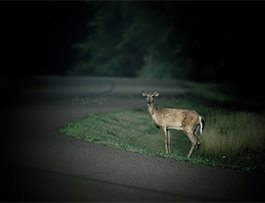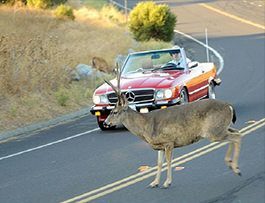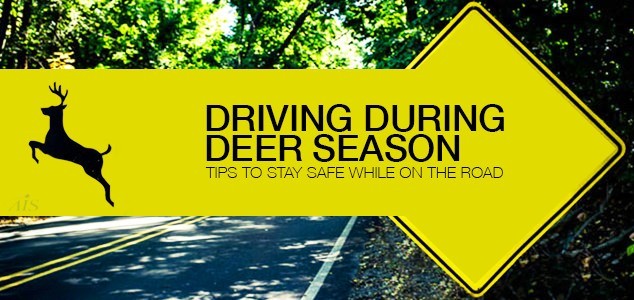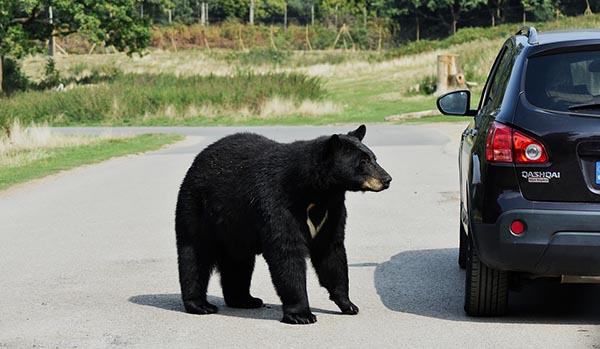Motorists and pedestrians are not the only ones you have to share the road with — especially during deer season. Though you can hit a deer any time of the year, October through January (deer breeding season) are the most common months for deer collisions. An accident involving a deer can cause significant property damage and personal injuries. Fortunately, there are ways drivers can help prevent deer collisions and stay safe on the roads this year.
Tips for Driving During Deer Season

The most efficient way of preventing a collision with a deer is by understanding deer behavior. They are most active at dawn and dusk.
Visibility is typically lower during these times, so reduce your speed and turn on your high beams if possible while driving in the morning and evening. Be especially vigilant near wooded areas or in marked deer crossing zones, as deer are most likely to be roaming in these areas.
If you notice a deer in the roadway, slow down or come to a complete stop. Deer may behave erratically when faced with an oncoming vehicle. Some run away, while others will stop in the middle of a lane. Do not attempt to predict a doe or buck’s behavior. Instead, come to a stop and wait for the deer to pass before proceeding. Keep a look out for other deer in the area too, as deer typically travel in packs.
What to Do if You Hit a Deer

Despite your best efforts to avoid colliding with wildlife, it is important to know what to do in case you hit a deer. Approximately 1.5 million people hit deer with their vehicles every year. Many are injured or even killed because they take evasive behaviors to avoid colliding with the animal. Do not speed up or swerve off-road or into oncoming traffic in order to avoid a deer. Instead, apply the brakes immediately and firmly, bringing your vehicle to a stop.
Move your vehicle to a safe place if possible, and do not get out of your vehicle to check to see if the deer is deceased. An injured deer that is not dead is scared and could attack anyone who approaches it. Dial 9-1-1 if you are injured, or contact the police department if everyone in your vehicle is safe and uninjured. An officer can complete an accident report for insurance purposes and will also contact the proper authorities to handle removing the deer from the roadway. Finally, contact your insurance company right away if you need to file a claim.
The information in this article was obtained from various sources. This content is offered for educational purposes only and does not represent contractual agreements, nor is it intended to replace manuals or instructions provided by the manufacturer or the advice of a qualified professional. The definitions, terms and coverage in a given policy may be different than those suggested here and such policy will be governed by the language contained therein. No warranty or appropriateness for a specific purpose is expressed or implied.


